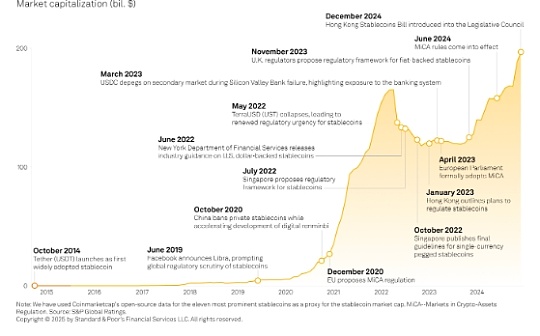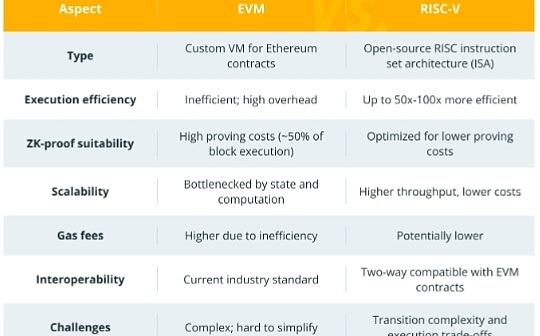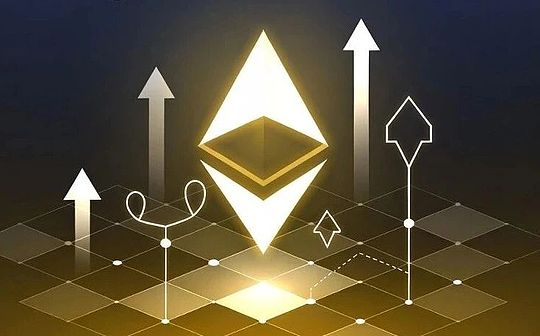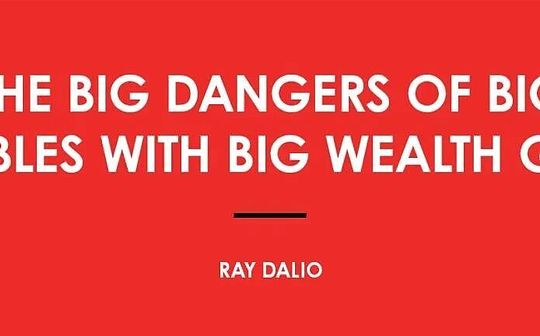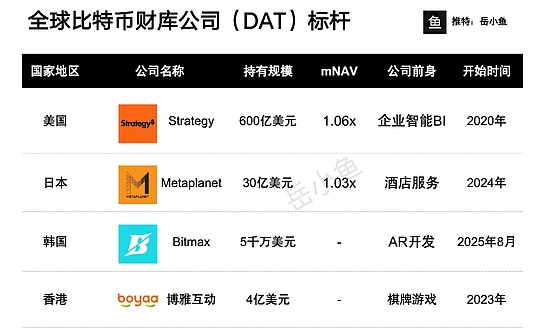
Author: Andrey Sergeenkov, CoinTelegraph; Compiled by: Deng Tong, Bitchain Vision
1. Understand the Creation Block and Its Significance
Genesis Block launches the blockchain by establishing a network, following consensus rules and linking all future blocks back to the starting point.
In the Proof of Work (PoW) chain, the Genesis Block is the first block mined on the blockchain network and serves as the basis for all subsequent blocks.It is usually hardcoded into a protocol and created by the creator of the blockchain.Since there are no previous blocks for reference or mining, it does not involve the traditional mining process.
By contrast, the Genesis block is usually created by the web developers and/or validators who initiate the PoS chain.Verifiers can choose based on specific criteria outlined in the agreement, rather than through the staking process, as there are no previous transactions or stakings available for reference.
The origins of the Genesis block date back to the launch of the Bitcoin network in 2009.Satoshi Nakamoto, the creator of Bitcoin’s pseudonym, generated the first block on the chain, becoming the world’s highest market value and highest market value, and even surpassed the market value of silver for a time.This makes the Genesis Block an integral part of launching a functional, decentralized blockchain ledger.
The core purpose of the Creation Block is to initialize the blockchain by encrypting the blocks linked to it behind it.It is the starting point for anchoring the blockchain and realizing trust in immutable ledgers.Genesis blocks set initial parameters, such as mining difficulty and block rewards, which control the operation and incentive structure of the network.Without the Creation Block providing this foundation, the blockchain would not have a safe and reliable foundation.
All cryptocurrency networks require a Creation Block to launch their distributed ledger.For example, Ethereum’s Genesis block contains instructions for initial Ethereum (ETH) allocation and core network parameters.
The Genesis Block provides a starting point on which the rest of the growing blockchain can be built.Without the Creation block, the blockchain has no basis to permanently record transactions through cryptographic hashing.
2. Bitcoin’s Creation Block
Satoshi Nakamoto took the lead in launching the Genesis Block of the Bitcoin blockchain, establishing the technical attributes and issuance model that are still used by cryptocurrencies today.
The Bitcoin Genesis block was mined on January 3, 2009 and is known as Block 0.It was created by Satoshi Nakamoto as a way to start the network and launch the first cryptocurrency.
Satoshi Nakamoto designed the Bitcoin Genesis block to establish core technical elements of the protocol and set certain startup parameters.
The block contains a quote to the title “The Times January 3, 2009 Secretary of the Exchequer is on the verge of the Second Bank Rescue” published in the London newspaper The Times on January 3, 2009.By including this title, Satoshi Timestamps the blocks and provides a poetic backdrop to Bitcoin’s mission as a decentralized alternative to the traditional financial system.

The specific value of the random number field of the Genesis block is 2083236893, which was discovered by Satoshi Nakamoto through the mining process to meet the difficulty target when the Bitcoin network is started.Although it is much less difficult than today’s standards, creating a genesis block still requires changing the random value until a valid block hash is found that meets the target.All subsequent blocks are built on the hash of the Genesis block, creating a chain that connects each block to the original block.
One of the most critical decisions of Satoshi Nakamoto is to set up mining rewards for adding new blocks to the blockchain.The Genesis Block includes a coin-based transaction that grants 50 Bitcoin (BTC) rewards, establishing a Bitcoin issuance model.However, this particular reward is a special case that cannot be actually spent due to the unique way the Genesis block is hardcoded into Bitcoin software.The 50 BTC reward sets a precedent for block rewards, which are cut by half every four years until the total supply cap of 21 million is reached.
The hard-coded design of the Bitcoin Genesis block establishes the core technology and monetary attributes of Bitcoin.As the first block on the Bitcoin blockchain, it launched a network distributed ledger, laying the foundation for innovation in blockchain technology, cryptocurrency and finance.
3. Genesis blocks of other cryptocurrencies
Although Bitcoin created the Creation Block, other cryptocurrencies have adopted this mechanism to launch their own blockchain network.
The Ethereum Genesis block was mined in 2015 as the basis of the Ethereum blockchain.It establishes the initial supply and allocation of ETH tokens by allocating Ethereum purchased by early adopters during presales.However, Genesis Block itself does not implement the PoW consensus model of the network, a separate part of the Ethereum protocol design (before the merger).Ethereum’s approach is different from Bitcoin in several ways, with the most obvious being the initial token allocation method, which allows early adopters to buy Ethereum’s native cryptocurrency ETH before the network goes live.
Many cryptocurrencies closely replicated Bitcoin’s Genesis Block format when they were launched.Litecoin’s Genesis block in 2011 is similar to Bitcoin, but it has made minor changes to technical parameters such as mining algorithms.Dogecoin’s Genesis Block in 2013 paid tribute to Bitcoin’s Genesis Block through encoded texts.
Some differences can be seen when comparing cryptocurrency Genesis blocks.Some use timestamps from the distant past as proof of work timestamps, while others use the most recent generation block as timestamps.The initial mining difficulty and block reward amount of different cryptocurrencies are also different.
Although structured similarly, each Genesis block is unique in initializing the distributed ledger of the blockchain.The blockchain industry continues to innovate the Creation Block structure through alternative solutions such as the proof-of-stake consensus model.However,The Genesis Block retains an important symbolic role and represents the beginning of a transparent and decentralized financial system.
4. The composition and structure of the creation block
Genesis Block lays the foundation for blockchain by establishing the data and structural formats that all future blocks will follow.
The Genesis Block contains the basic data, laying the foundation for the rest of the blockchain.This starting block is hardcoded using index 0 and creates the structure that subsequent blocks will follow.
The data embedded in the Genesis block includes timestamps, block hashs, previous block hashs, random numbers, and block reward addresses.The timestamp indicates the creation time of the block, and the hash value of the previous block is a series of zeros because the previous block does not exist.

In a PoW blockchain like Bitcoin, a random number is a variable value to find a valid block hash that satisfies the network difficulty target.However, the importance and purpose of random numbers may vary across blockchain implementations, especially those that do not use PoW consensus.The block reward address indicates where to send the block reward, although this is different in the Genesis block compared to subsequent blocks.
It is worth noting that the concept of block reward address is more subtle in the Genesis block, as it does not function in the traditional way in subsequent blocks, especially in networks like Bitcoin.The rewards for the Creation Block are not to be spent.
Additional Genesis Block Events can specify initial conditions or token distribution.For example, the smart contract executed by the Genesis block of Ethereum allocates the starting supply of ETH.It is not uncommon for Genesis blocks to carry encrypted messages or references and add symbolic or commemorative layers to blocks.
The structure of the Creation block contains the header and the block.The header includes metadata such as version, timestamp, target difficulty, Merkle root hash (Rollup transaction) and random numbers.The body contains all transactions in this block, which is just a reward transaction for the creator of the Creation block in the newly launched network.
This standard structure forms a template of the chronological order of subsequent blocks.The fixed composition of the Genesis block establishes a blueprint for verifying transactions, adding new blocks, reaching consensus and growing chains.This pioneering first block launches the functionality of the blockchain.
5. Events after the Creation Block
Genesis Block Launches the Network.Confirmation, incentives and difficulty adjustments can then achieve decentralized dissemination, consensus and mining, thereby developing blockchain.
Once the Genesis block is established, the blockchain network can be officially launched.This milestone opens participation to the public and initiates a process of consensus and decentralization.
After it was launched, the blockchain began to be built on top of the Creation Block.As the first block, the Genesis block is automatically accepted by the network node as valid, but it does not require traditional confirmation like transactions or subsequent blocks.The subsequent block references the hash value of the Genesis block and establishes an uninterrupted chain connected back to the network origin.
With the confirmation of the Genesis block, miners compete to add new blocks.As the blocks are added, more confirmations will be accumulated in the previous blocks, thereby enhancing the persistence of the blockchain.New cryptocurrencies are issued through block rewards and transactions are verified.
Network difficulty is dynamically adjusted according to activity to maintain the pace of block creation.More miners and higher engagement will increase competition and difficulty, while lower activities will reduce difficulty goals.This fluctuation ensures self-regulation of the blockchain.
After the Genesis block, blockchain has grown organically through decentralized dissemination, consensus mechanisms and incentives for mining.This activity solidifies the Genesis block into an immovable anchor point.With the popularity of adoption, transaction volumes have increased rapidly.
As for cryptocurrency blockchain, the value will increase as trust in the network is established.Tokens obtain monetary value based on market supply and demand dynamics.Speculation, trading and real-world utilities drive investment and engagement.
Therefore, with the activation of the network, the Genesis Block no longer enjoys honorary status.The launch it has led to a thriving ecosystem managed by a consistent participant in the economic interests of the blockchain incentive structure.

